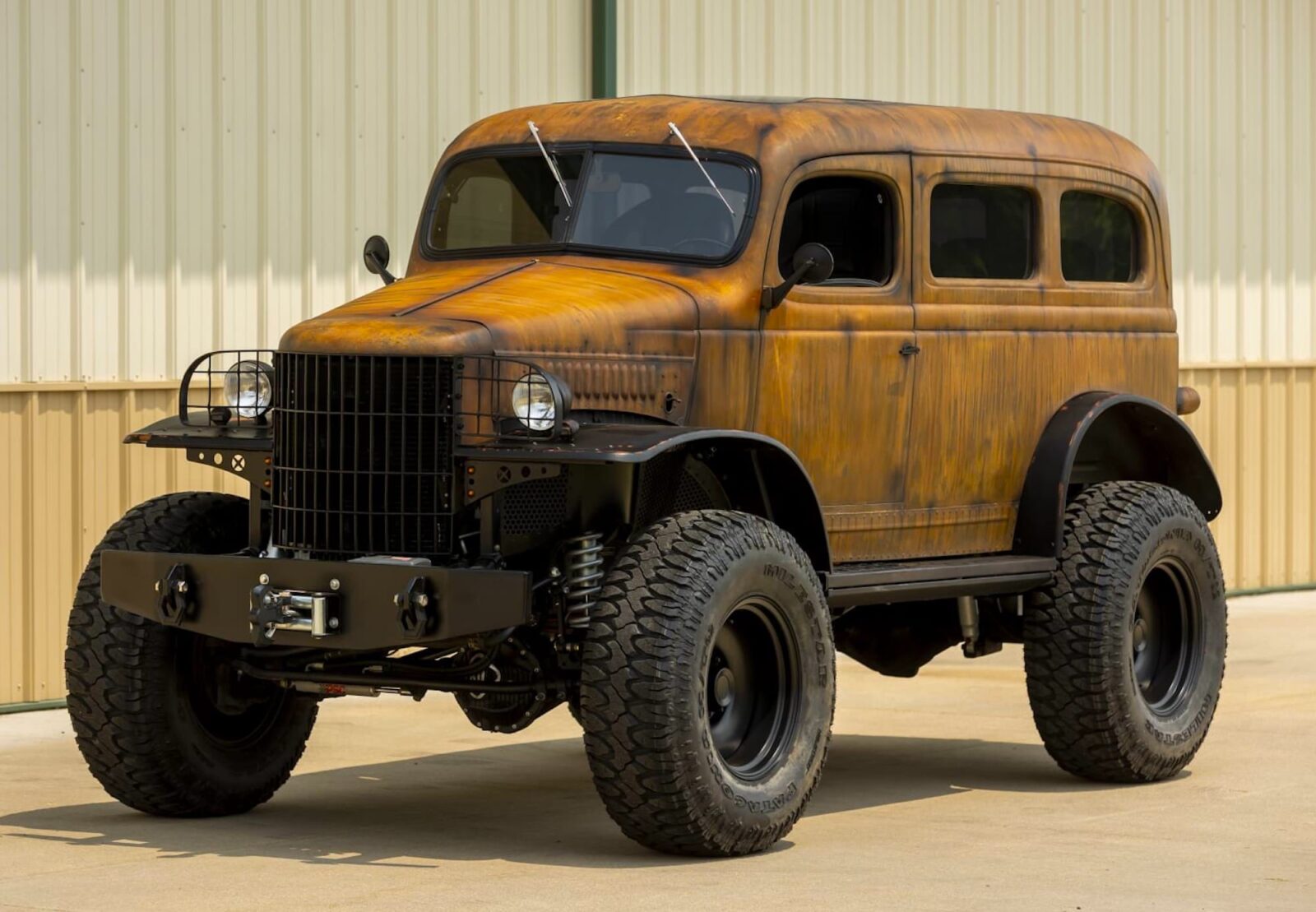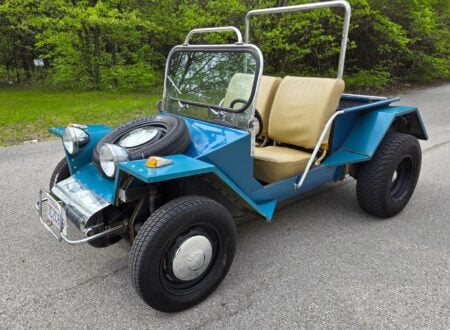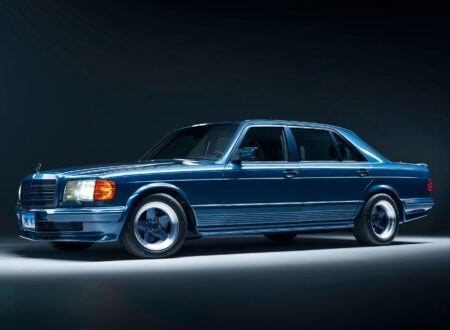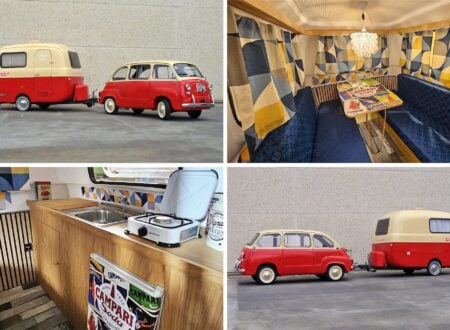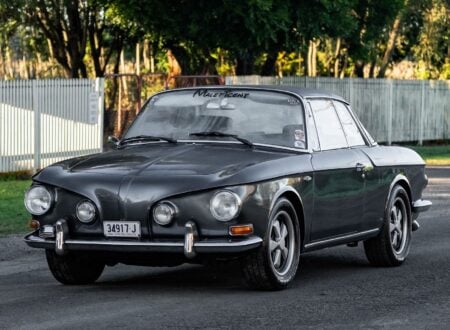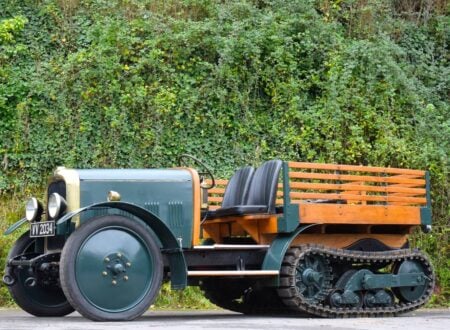This vehicle started out as a standard WWII-era 1941 Dodge WC26 Wagon, more recently it has been completely rebuilt and it’s now powered by a modern 5.9 liter 24 valve Cummins turbodiesel inline-six.
Inside you’ll find an all-new interior with front bucket seats, dual rear seats, front and rear air-conditioning, a panoramic sunroof, an MB Quart sound system, full sound deadening throughout, and plenty more.
Fast Facts – An Upgraded Dodge WC26 Wagon
- This vehicle is a heavily modified 1941 Dodge WC26 Wagon from WWII. It features a modern 5.9-liter Cummins diesel engine, 22-inch wheels with 42-inch tires, and custom suspension. The exterior has a deliberately aged look, while the interior is fully upgraded with modern amenities.
- The Dodge WC series played a crucial role in WWII, with over 250,000 trucks produced. These versatile vehicles served various purposes, from troop and cargo transport to specialized roles like ambulances. Their reliability and off-road capability made them invaluable during the war.
- This particular WC26 has been extensively rebuilt with modern features. It includes front bucket seats, air conditioning, a panoramic sunroof, and an MB Quart sound system. The vehicle also boasts a Warn winch, LED lighting, and a custom exhaust system.
- The restoration maintains a balance between modern performance and vintage aesthetics. The body has a patinated finish for an apocalyptic look, while incorporating advanced components like a digital dash display, coilover suspension, and a custom turbo intercooler for the Cummins engine.
History Speedrun: The Dodge WC26
The Dodge WC series is a range of light military trucks produced by Dodge during World War II. The “WC” designation stands for “Weapons Carrier,” as these trucks were designed to transport troops, weapons, and supplies in combat environments.
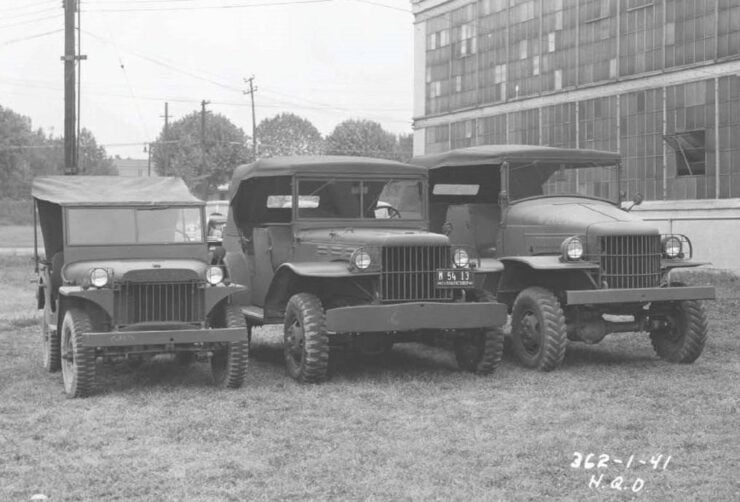 All 3 U.S. World War II light 4WD military utility vehicles that have been called ‘Jeeps’ – the ¼-ton Willys MA and both ½-ton and ¾-ton Dodge WC series, photographed at Holabird Quartermaster Depot in 1941. Image courtesy of the U.S. Army.
All 3 U.S. World War II light 4WD military utility vehicles that have been called ‘Jeeps’ – the ¼-ton Willys MA and both ½-ton and ¾-ton Dodge WC series, photographed at Holabird Quartermaster Depot in 1941. Image courtesy of the U.S. Army.The WC series was closely based on the earlier (and very similar) Dodge VC series which had proven so invaluable that Dodge was contracted to supply more of them, and so the first WC model, the WC-1, entered production in 1941.
Over the course of the war, Dodge produced a wide variety of WC models, each designed for a specific purpose.
The most common models were the WC-51 and the WC-52, which were used as cargo carriers and personnel transporters. The WC-53 was a command car with a longer wheelbase, while the WC-54 was a medical vehicle used as an ambulance. There were also specialized models for tasks such as firefighting and bomb disposal.
The WC series was powered by a six-cylinder L-head gasoline engine designed to work on very low octane fuels, producing 92.5 bhp at 3,170 rpm. The trucks featured selectable four-wheel drive, which made them highly capable off-road vehicles, they had dual-range transfer cases, and they were known for their durability and reliability in tough conditions.
Overall, the Dodge WC series played a significant role in the Allied war effort, with over 250,000 trucks produced during the war. After the war, many surplus WC trucks were sold to civilians and were used for a variety of purposes, including farming and construction.
Today, the WC series is highly sought after by collectors and enthusiasts, and they remain a popular choice for off-road enthusiasts and vintage military vehicle collectors.
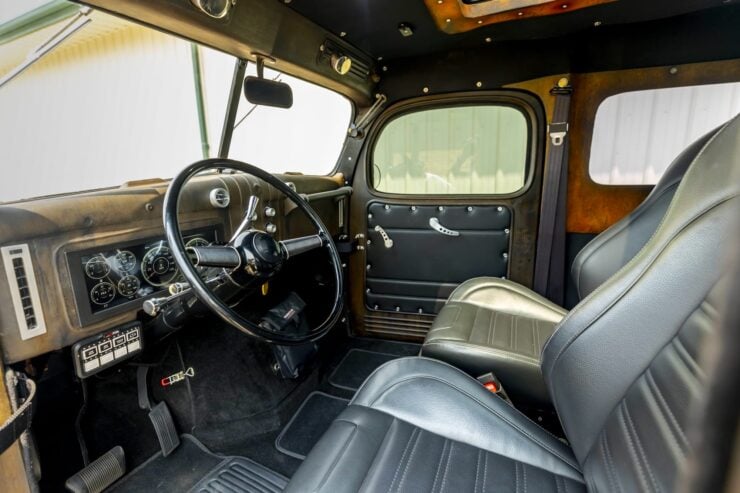 Inside you’ll find that it’s all been fully restored, just like the rest of the vehicle, and it has air conditioning, bucket seats, sound deadening, and more.
Inside you’ll find that it’s all been fully restored, just like the rest of the vehicle, and it has air conditioning, bucket seats, sound deadening, and more.Interestingly, after WWII ended in 1945 Dodge released the Power Wagon, a vehicle closely based on the WWII-era WC trucks but modified for civilian use – it became remarkably successful and is now recognized as one of the earliest mass-produced 4×4 pickup trucks.
The Modified 1941 Dodge WC26 Wagon Shown Here
The Dodge WC26 Wagon you see in this article has been completely restored inside and out, though the steel body has been given a patinated finish to make it look like it just rolled off the set of an apocalyptic Hollywood film.
The vehicle now rides on Detroit Steel “D-Town” 22 inch wheels on all four corners, fitted with 42 inch Milestar Patagonia M/T-02 tires. The body was removed and media blasted, as was the chassis which was then given a fresh coat of paint.
Power is provided by a 5.9 liter 24-valve Cummins inline 6-cylinder diesel engine with a custom turbo intercooler, and a custom tune. Power is sent back through an automatic transmission to all four wheels. The vehicle rides on live axles front and back fitted with coilover suspension and a steering damper.
Inside you’ll find full sound deadening, twin front bucket seats that recline, an Autometer digital dash display, an MB Quart sound system, a panoramic sunroof, custom black and patina interior side and roof panels, front and rear air conditioning, and a factory original flip out front windshield.
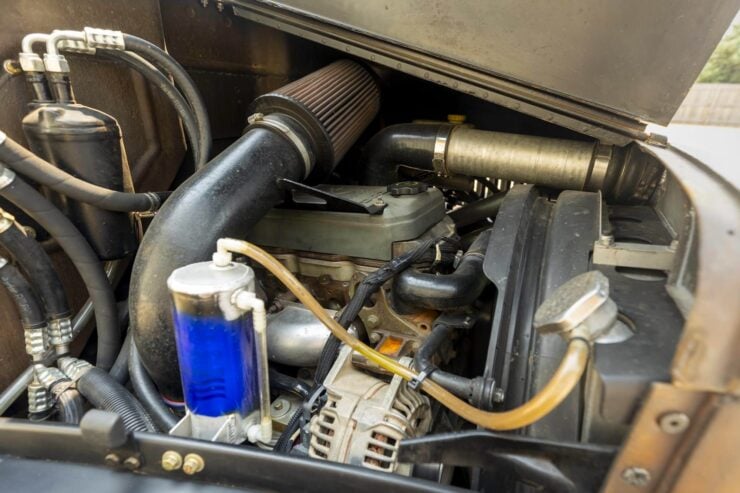 Power is provided by the venerable 5.9 liter 24 valve Cummins inline-six turbodiesel, sending power to all four wheels via an automatic transmission.
Power is provided by the venerable 5.9 liter 24 valve Cummins inline-six turbodiesel, sending power to all four wheels via an automatic transmission.It’s fitted with a Warn 12,000 pound winch, a 38 gallon custom aluminum fuel tank, LED headlights and tail lights in custom housings, Baja Designs exterior and interior auxiliary lighting, a FASS fuel system, dual deep cycle Interstate batteries, dual aluminum Griffin radiators, and a custom 4 inch ceramic coated Dynomax exhaust.
The vehicle is now due to roll across the action block with Mecum in September, it’s showing just 1,021 miles on the odometer and you can visit the listing here if you’d like to read more about it or register to bid.
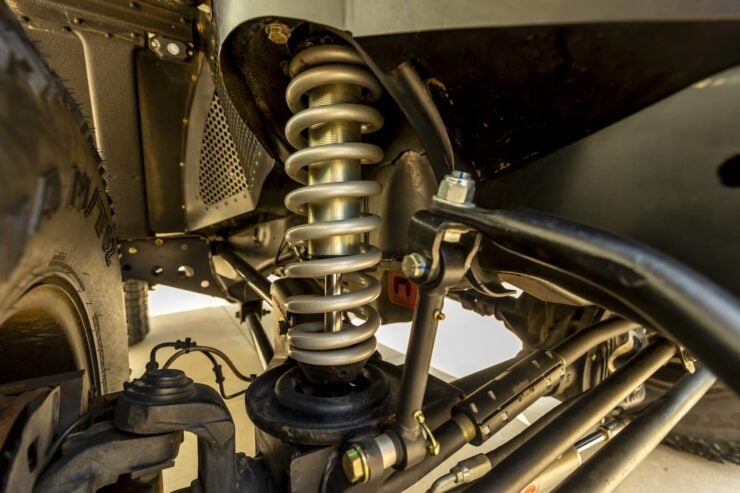
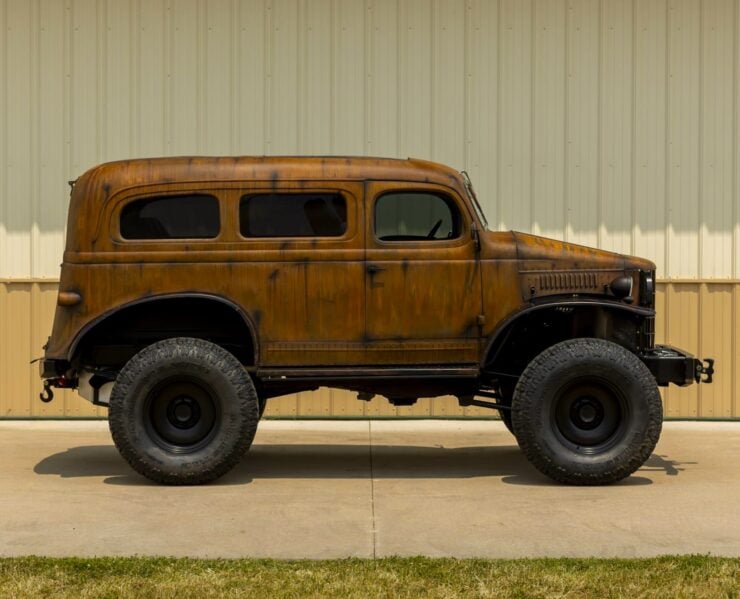
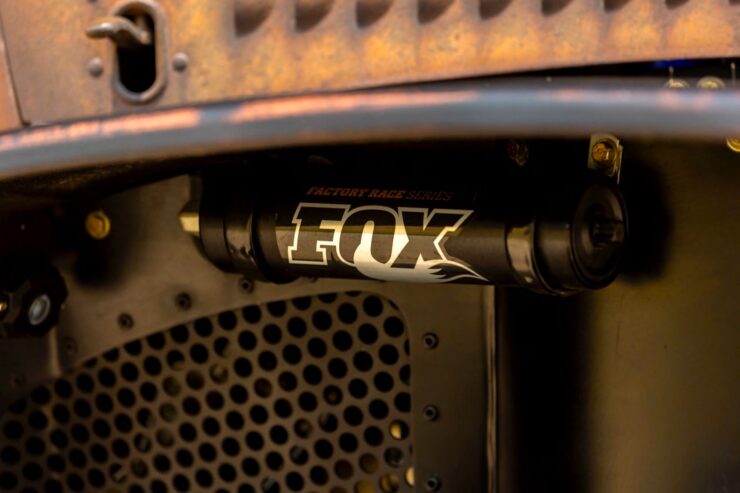
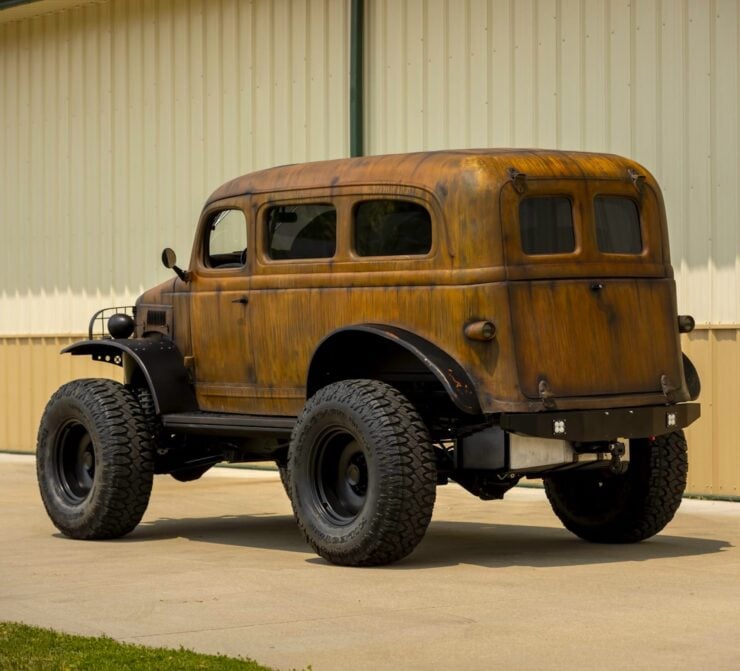
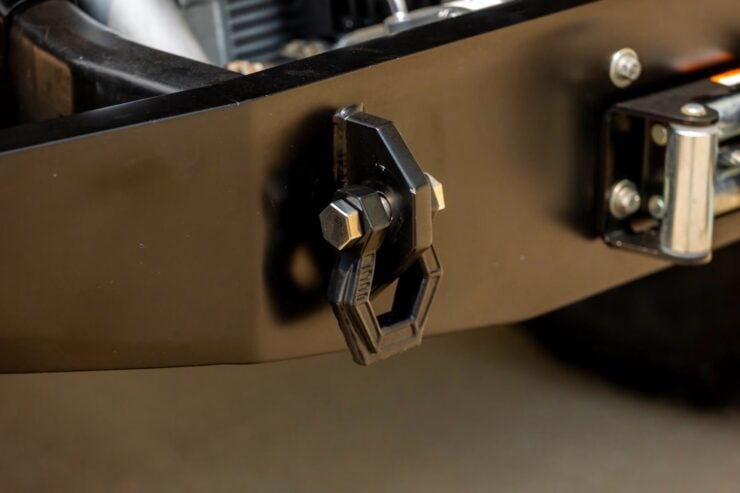
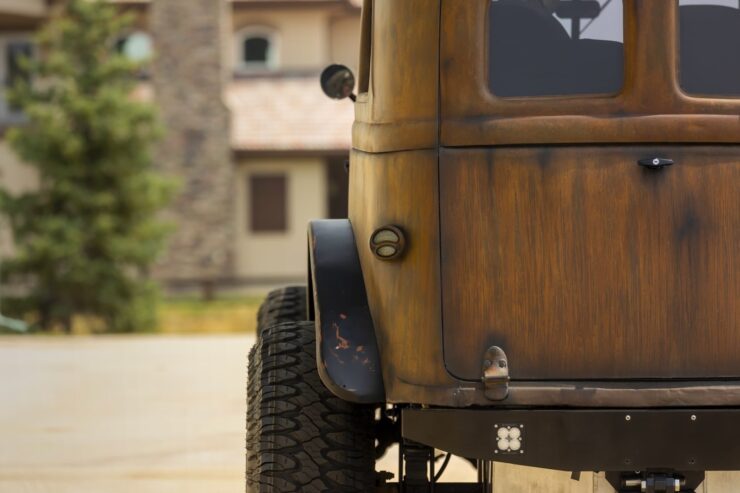
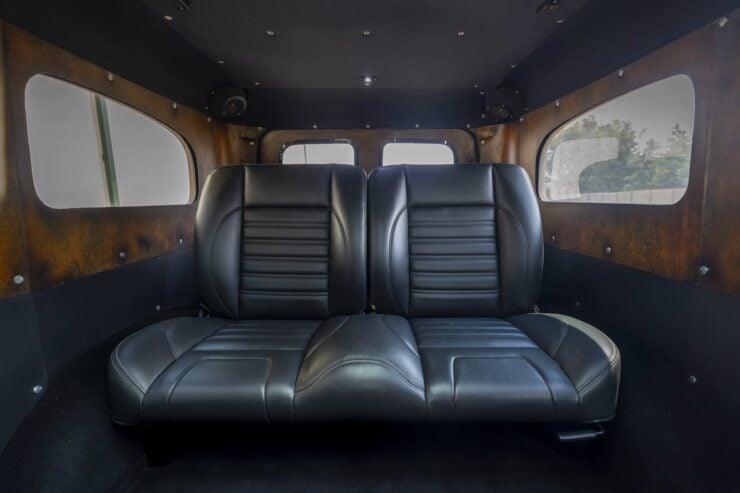
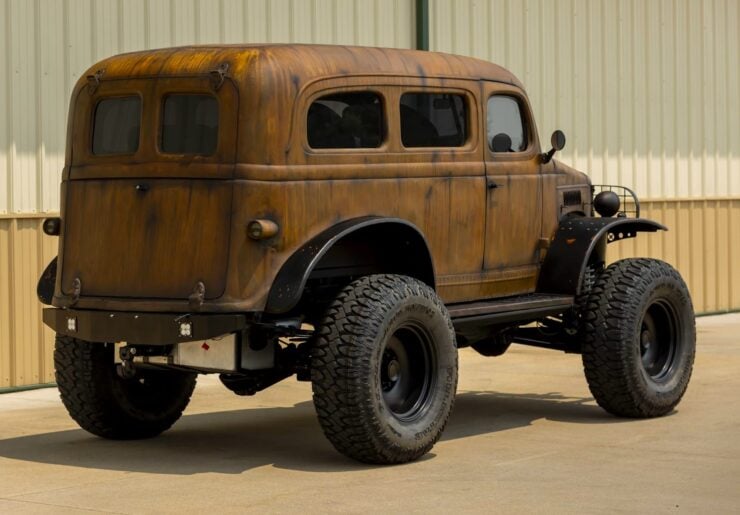
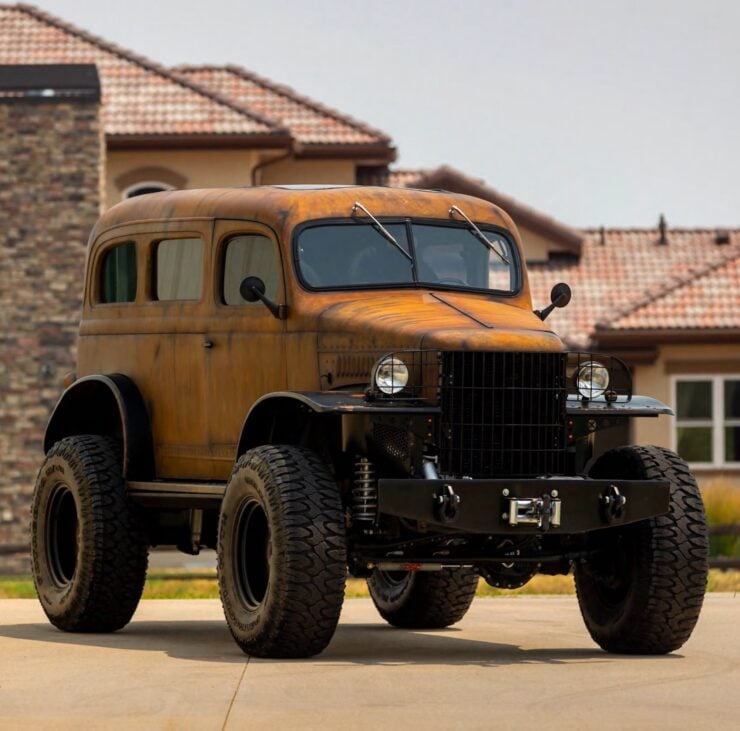
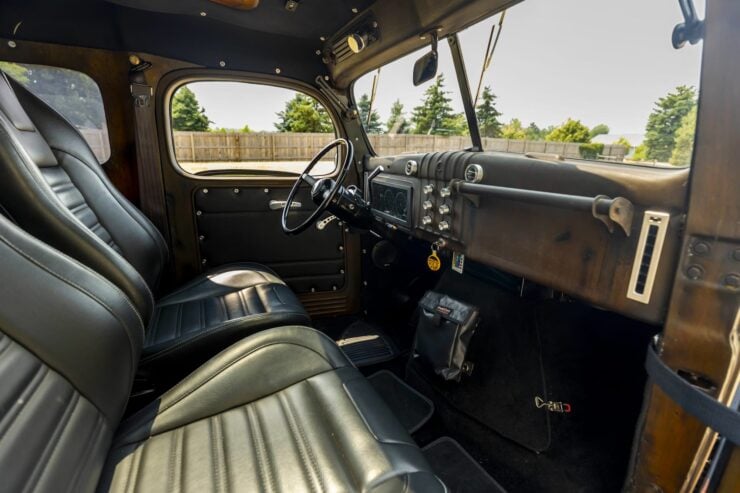
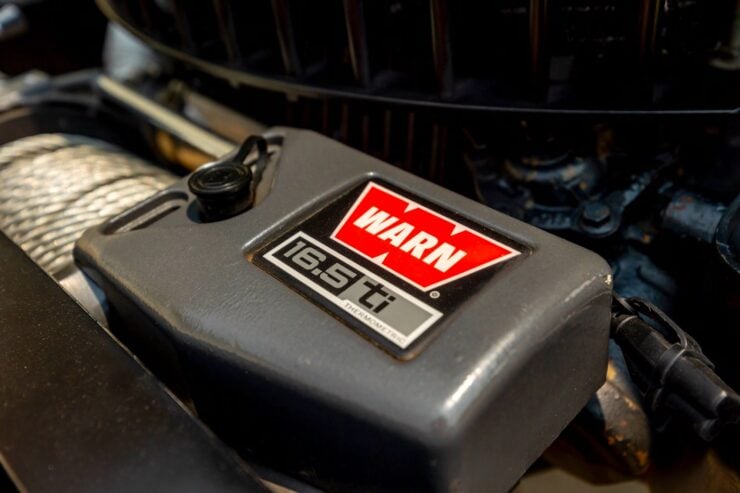
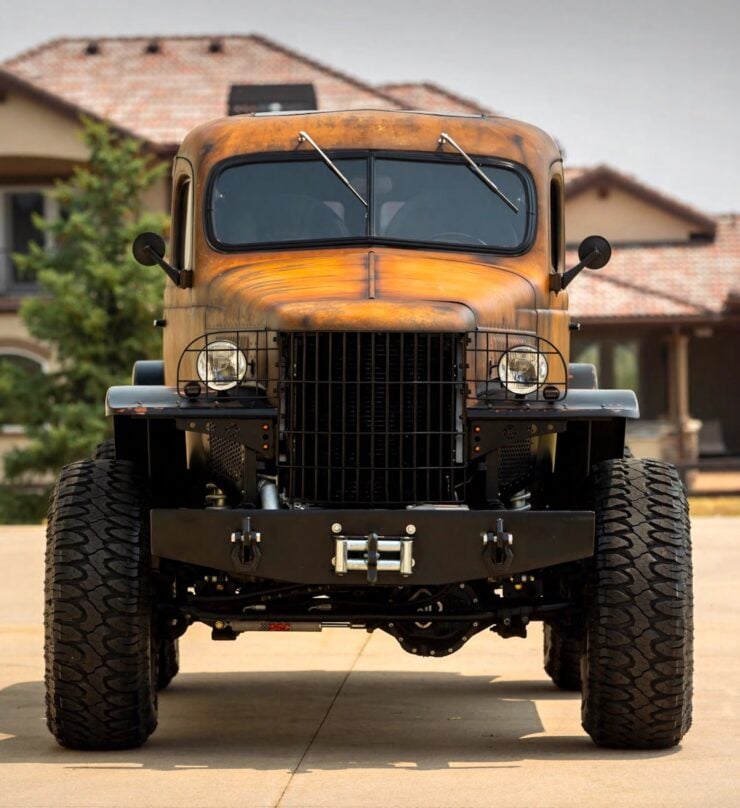
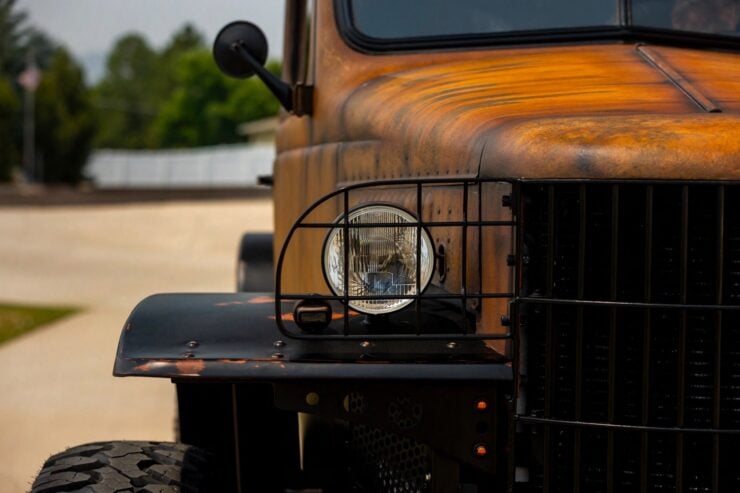
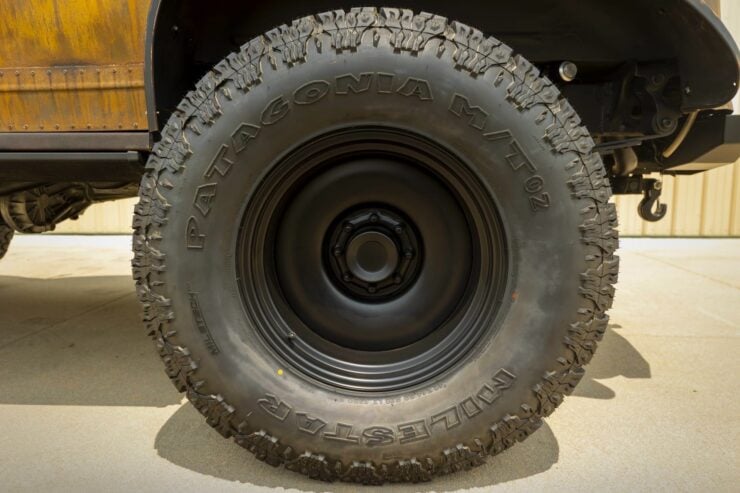
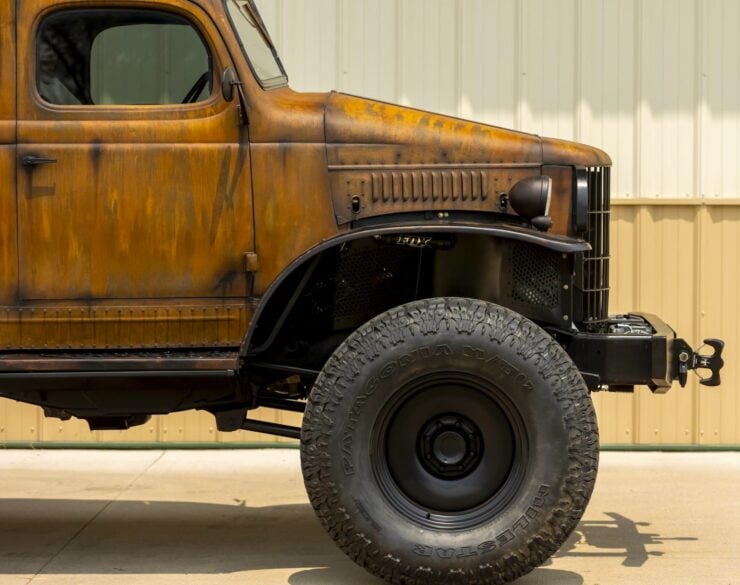
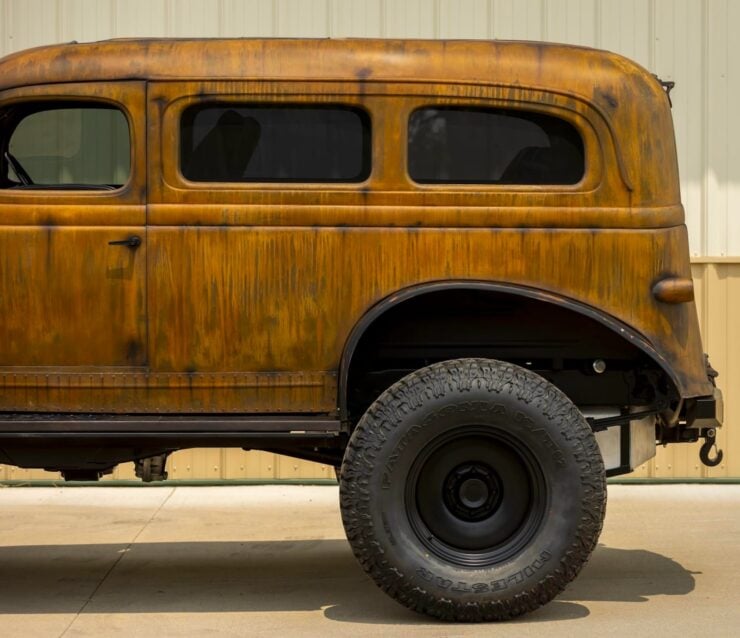
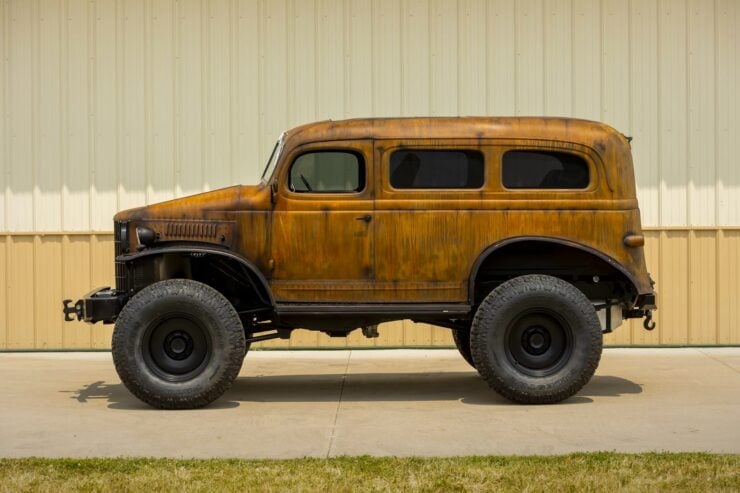
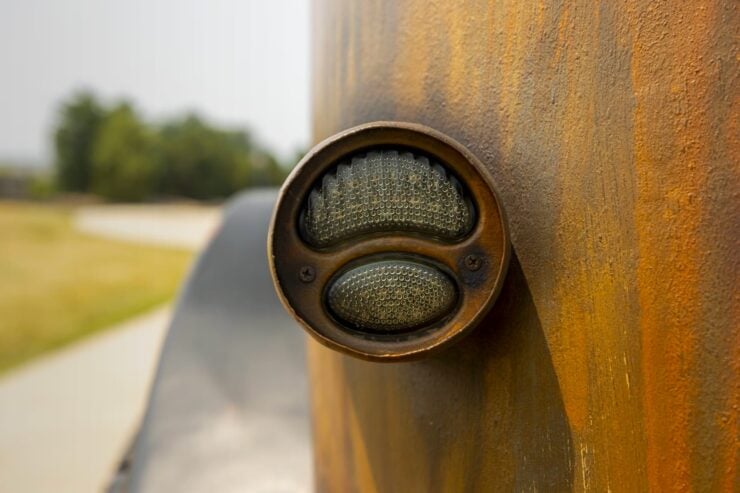
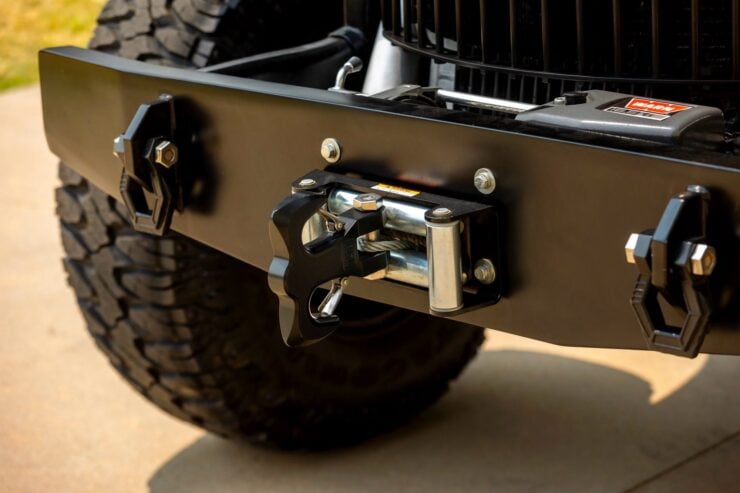
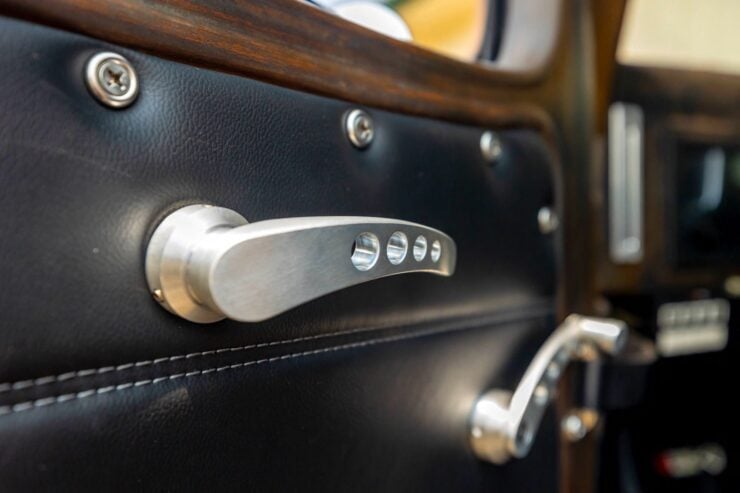

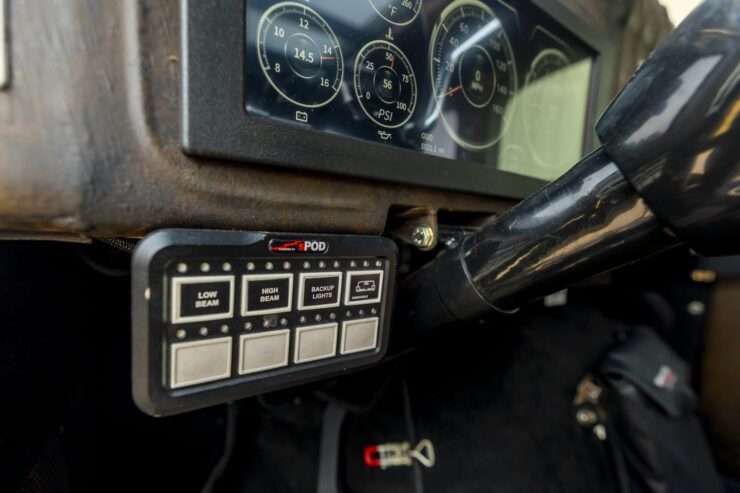
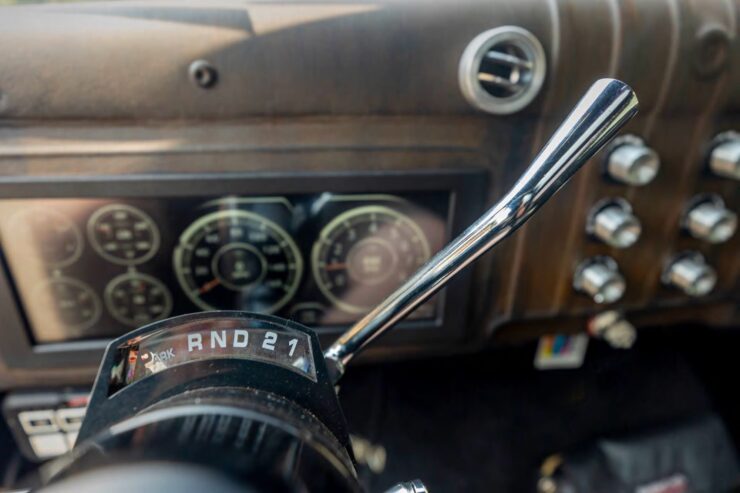
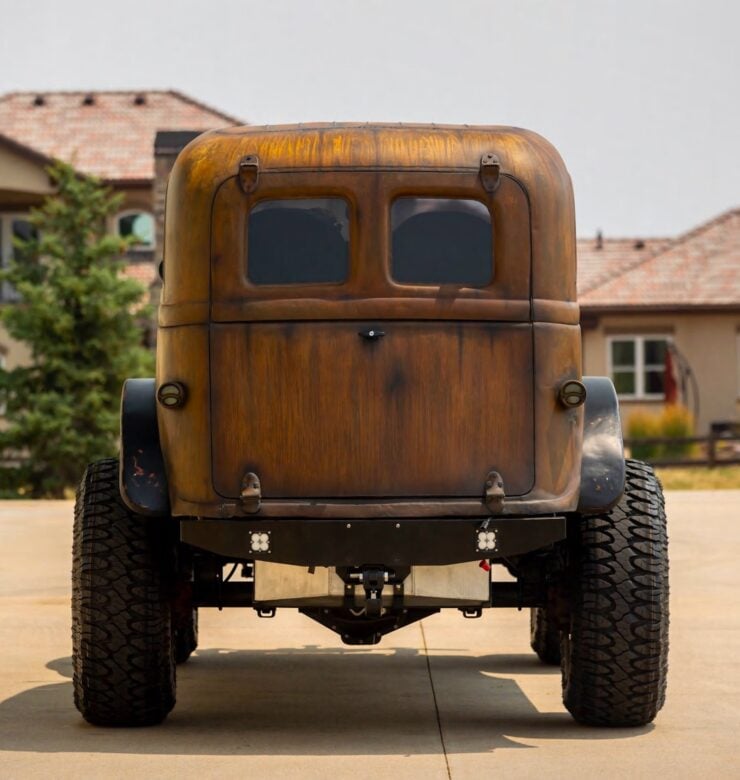
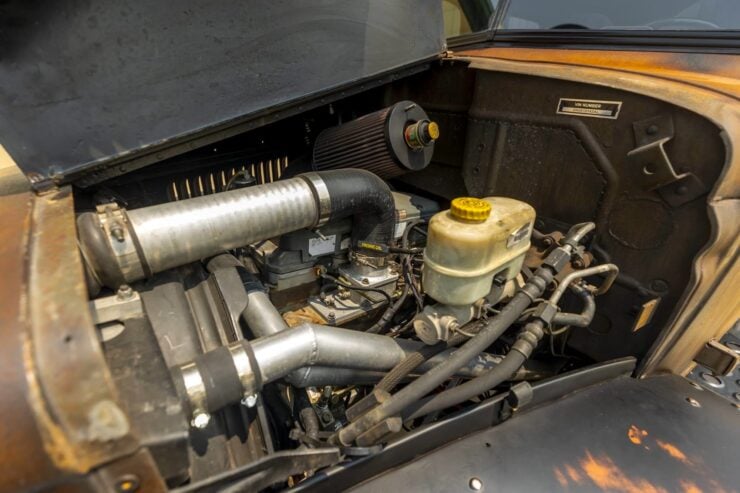
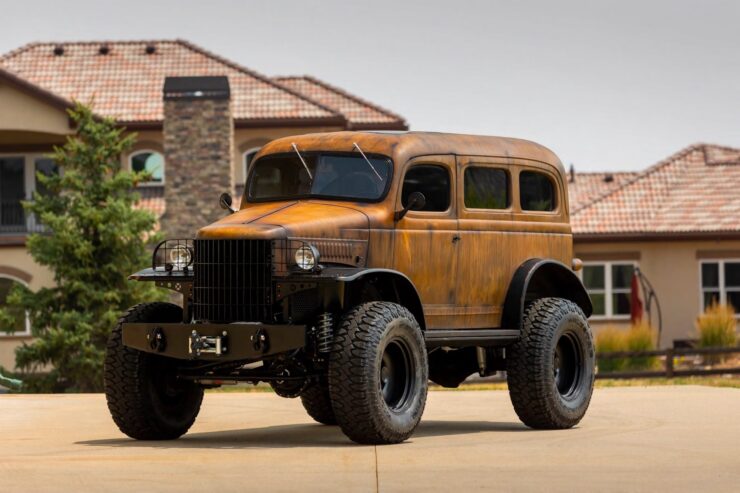
Images courtesy of Mecum

